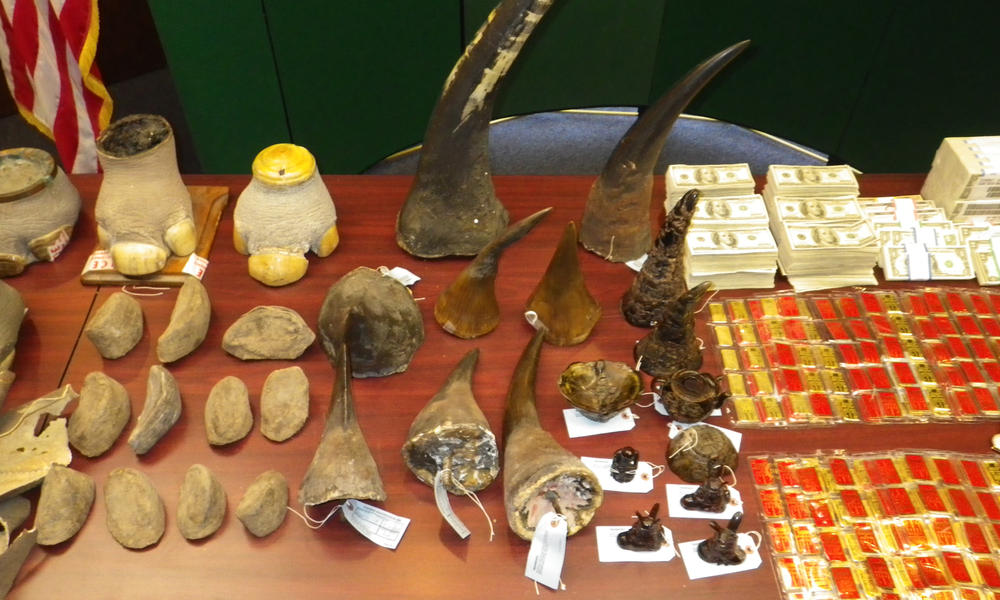It has been said that
grounded rhinoceros’ horns can cure headaches and fevers, while drinking the
soup made with a tiger’s genital can supposedly help with a man’s fertility.
Based on such statements/assumptions, animal parts such as the rhinoceros horns
can fetch a healthy price in the market. However, did you know that, the
rhinoceros horn is actually made of the same material as our fingernails?[1]
Essentially, chewing your own nails would give the same effect as that of
consuming the horns from rhinos! Most of the effects from the medication made from animal parts
are purely psychological, and are based on traditional beliefs, which not
actually help with their illnesses.
 vs
vs 
Yao Gao Zhong, a
professor of history and philosophy of science said this “Chinese medicine practitioners often concoct cures
for disease by examining relations between written Chinese symbols for certain
animals and certain diseases. In Chinese, the character for maple bark is fong,
and similarly, arthritis pain is tong fong. This coincidence forms
the basis of the belief that maple bark cures arthritis pain. If the word
matches, Zhong says, they believe they have found a cure for the disease.” [2]

http://www.ministryoftofu.com/2012/02/cartoon-i-sympathize-with-bears-toobut-bears-sympathize-with-us-even-more/
Biles are often extracted from bears through cruel and inhumane methods. For instance, as shown in the photograph above, bears are kept in tight cages to prevent them from moving around, while a tube is embedded under the skin, attached to the gall bladder[7]. To find out more about how bile are extracted from bears, click on this link. It is shocking to see how much pain humans put on these creatures, just to extract a substance that may or may not even be benefit us.
In the production of traditional Chinese medication (TCM),
animal parts are often found as part of the active ingredient. Even though
there are no scientific prove that the animal parts are beneficial to the human
health, many TCM practitioner are adamant on their stance that their medication
are useful, and that the animal parts in the medicine are irreplaceable.[3]
This is, of course, not true! For instance, the bile harvested from bears,
which is used as a remedy for treatment of gall stones, biliary cirrhosis, and
liver cancers[4],
can be made synthetically in the lab!
Over the past few years, the number of illegal wildlife
products confiscated from smugglers has almost tripled, from 18000 to 46000 in
a span of just two years.[5]
This increase in wildlife trafficking is worrying, with size of population the animals
in the wild quickly dropping in numbers.

http://www.worldwildlife.org/stories/wildlife-crime-a-threat-to-regional-security
What scares me the most is that the buyers of these illegal
wildlife are mostly the rich and the educated, where wildlife products are seen
as a way to showcase their economic power. In fact, researches by Traffic has
proven that “wealth is a stronger driver of illegal and unsustainable wildlife
trade in Southeast Asia than poverty”[6].
Compared to the people who seek the animal parts as a form of medicine in
desperation, the people that buy the products to flaunt their wealth is simply
unforgiveable.

In the next post, I will be exploring the drivers of illegal wildlife trafficking. Should the poor be blamed for providing with the supply to support their own livelihood, or should blame be on the affluent for creating the demand?
[1]
Using Endangered Animal Species in traditional Chinese medicine; http://www.asiabiotech.com/publication/apbn/11/english/preserved-docs/1117n18/1196_1197.pdf
[2] http://scienceline.org/2011/06/from-beijing-to-new-york-the-dark-side-of-traditional-chinese-medicine/
[3] From
Beijing to New York: The dark side of traditional Chinese medicine
http://scienceline.org/2011/06/from-beijing-to-new-york-the-dark-side-of-traditional-chinese-medicine/
[4]
The journey of Chinese medicine; http://www.jcm.co.uk/endangered-species-campaign/asiatic-black-bear/use-in-traditional-medicine/
[5] A
Burden of Care Over Seized Exotic Wildlife in Thailand; http://www.nytimes.com/2013/02/05/world/asia/thailand-faces-a-noahs-ark-size-burden-of-wildlife-care.html?_r=0
[6] TRAFFIC
(2008), ‘What’s Driving the Wildlife Trade? A Review of Expert Opinion on
Economic and Social Drivers of the Wildlife Trade and
Trade Control Efforts in Cambodia, Indonesia, Lao PDR
and Vietnam’, p. xiv.
[7] Bear bile extraction; http://www.jcm.co.uk/endangered-species-campaign/asiatic-black-bear/bear-bile-extraction/
No comments:
Post a Comment